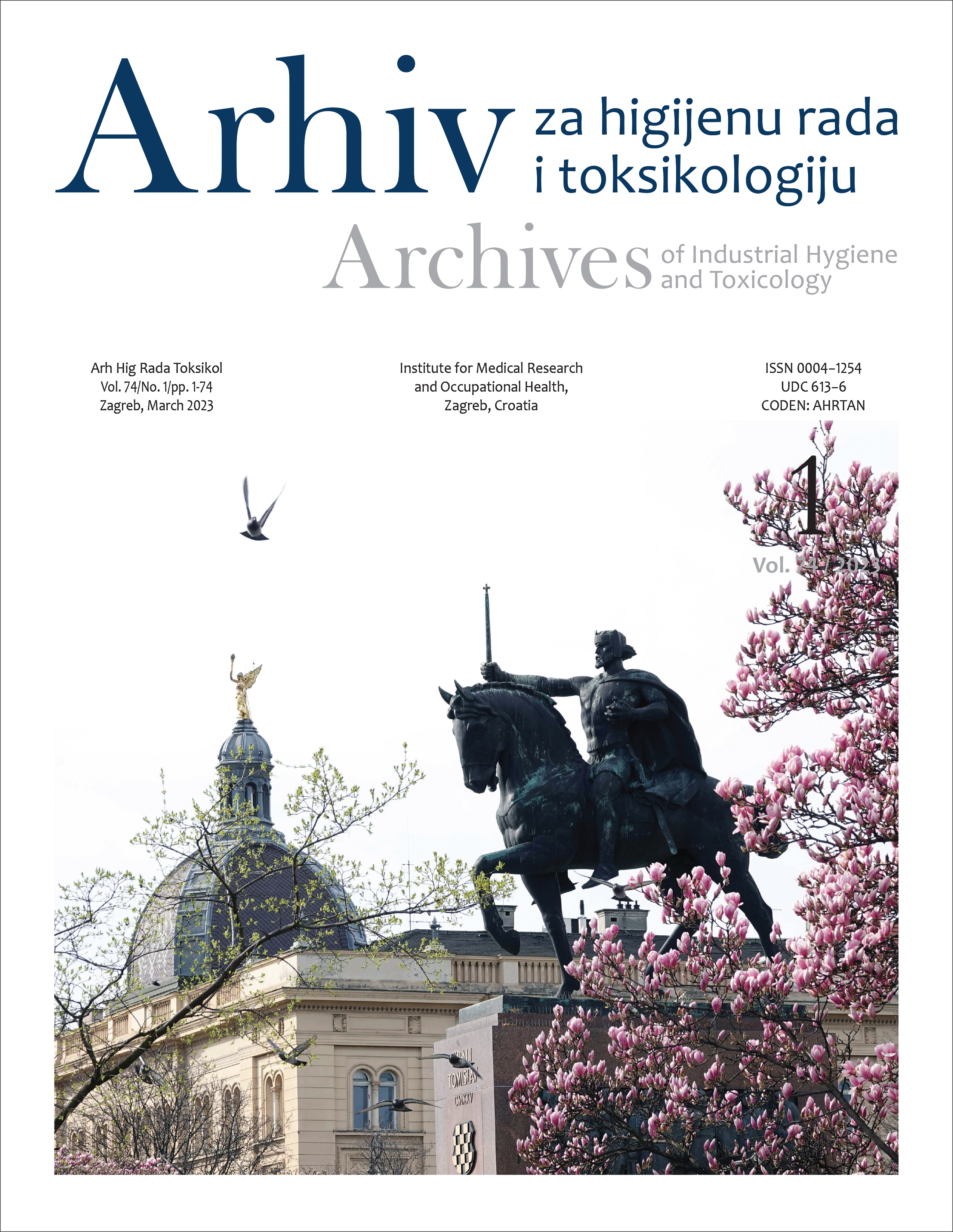Different damaging effects of volatile anaesthetics alone or in combination with 1 and 2 Gy gamma-irradiation in vivo on mouse liver DNA: a preliminary study
DOI:
https://doi.org/10.2478/aiht-2023-74-3692Keywords:
alkaline comet assay, halothane, ionising radiation, isoflurane, sevofluraneAbstract
As the number of radiotherapy and radiology diagnostic procedures increases from year to year, so does the use of general volatile anaesthesia (VA). Although considered safe, VA exposure can cause different adverse effects and, in combination with ionising radiation (IR), can also cause synergistic effects. However, little is known about DNA damage incurred by this combination at doses applied in a single radiotherapy treatment. To learn more about it, we assessed DNA damage and repair response in the liver tissue of Swiss albino male mice following exposure to isoflurane (I), sevoflurane (S), or halothane (H) alone or in combination with 1 or 2 Gy irradiation using the comet assay. Samples were taken immediately (0 h) and 2, 6, and 24 h after exposure. Compared to control, the highest DNA damage was found in mice receiving halothane alone or in combination with 1 or 2 Gy IR treatments. Sevoflurane and isoflurane displayed protective effects against 1 Gy IR, while with 2 Gy IR the first adverse effects appeared at 24 h post-exposure. Although VA effects depend on liver metabolism, the detection of unrepaired DNA damage 24 h after combined exposure with 2 Gy IR indicates that we need to look further into the combined effects of VA and IR on genome stability and include a longer time frame than 24 h for single exposure as well as repeated exposure as a more realistic scenario in radiotherapy treatment.












